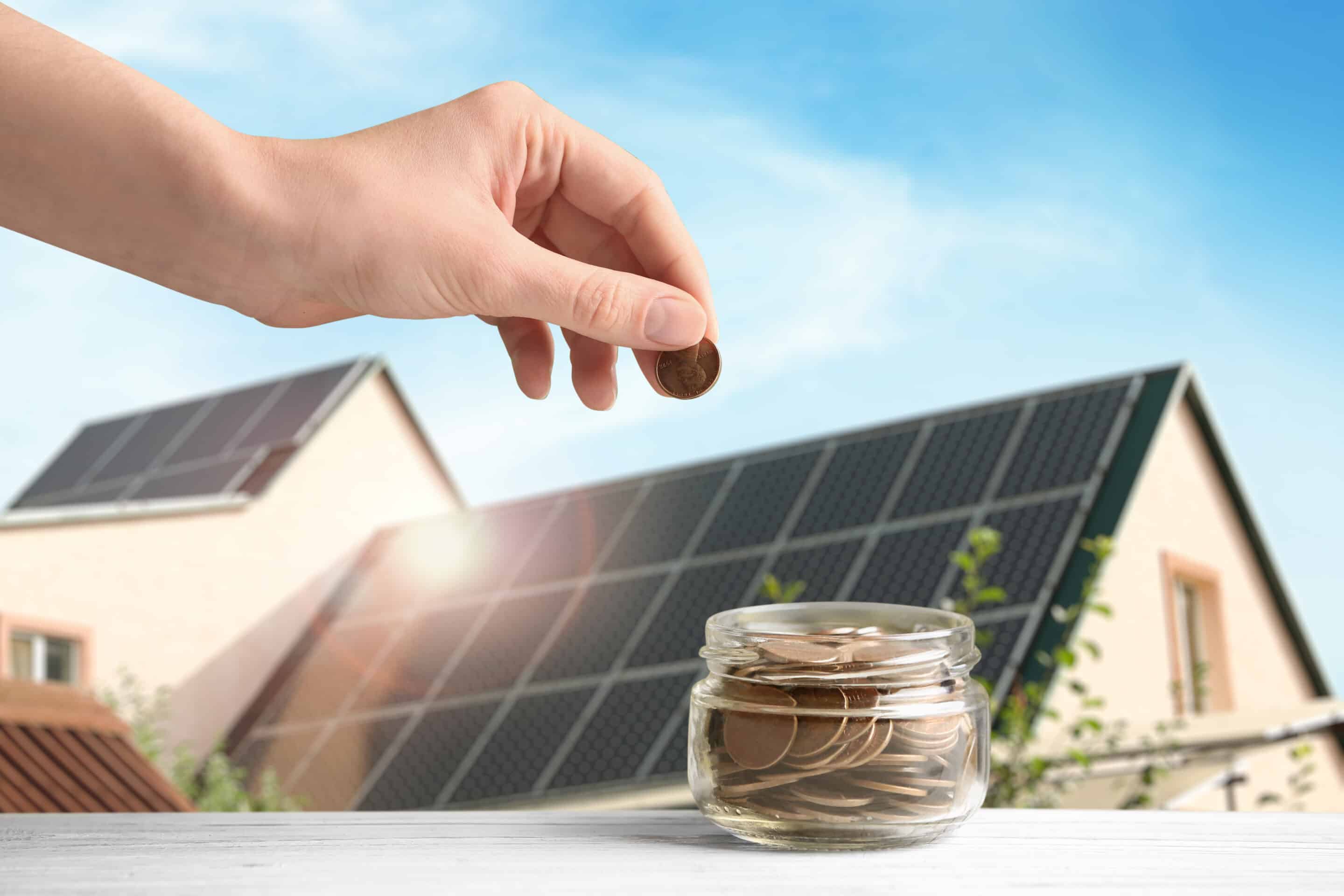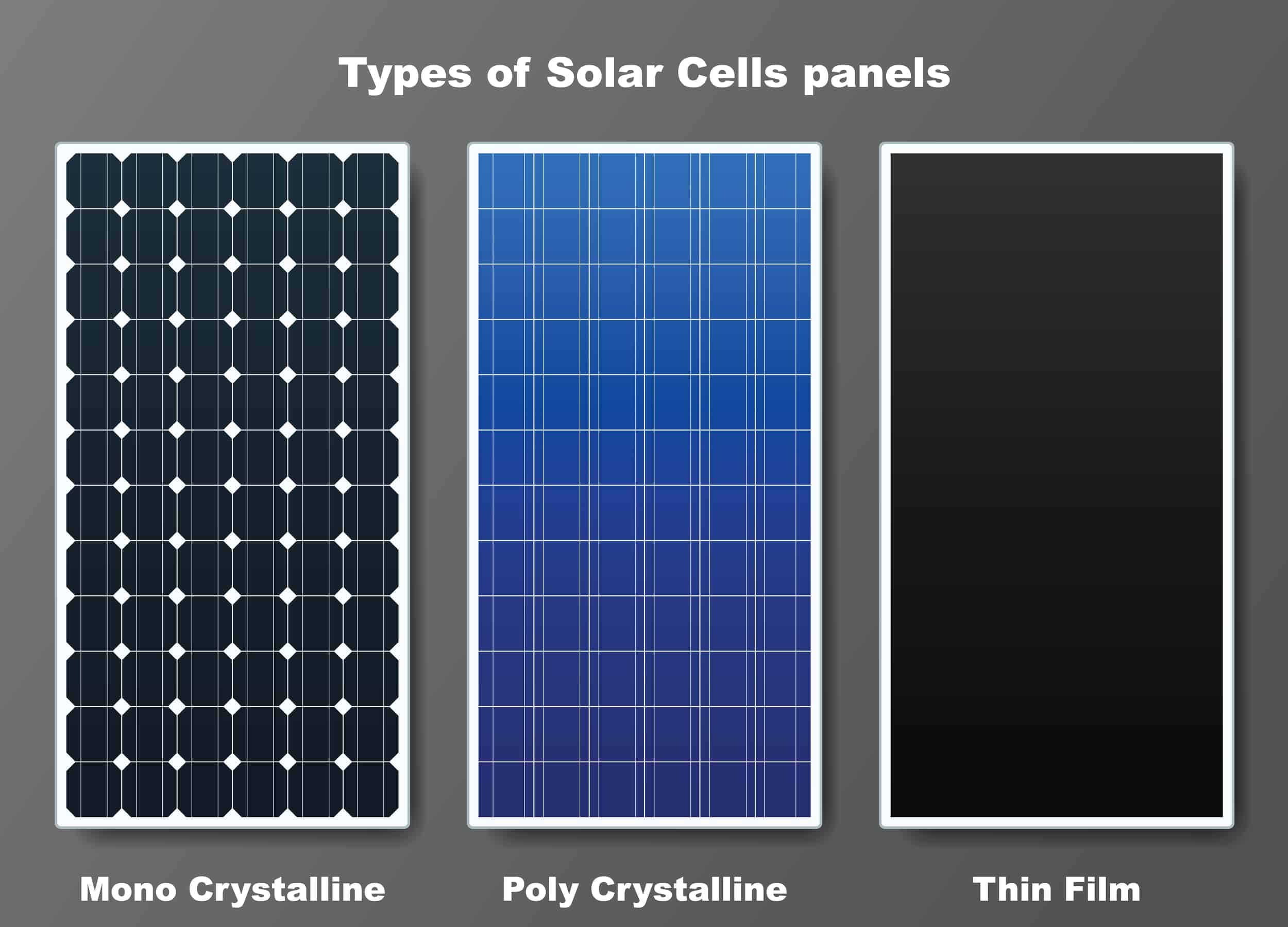
How Much are Solar Panels?
Did you know a solar roof could end up paying for itself?
Discover what costs & benefits to consider when going solar to see all the ways you’ll save!
While solar panel systems may seem to have a high overall cost, solar energy’s long-term savings and numerous eco-friendly benefits far outweigh the system installation fee. Additionally, solar panels are low-maintenance, requiring almost no cleaning or repair costs over time.
Your specific solar cost will be different depending on your property, which makes answering, “how much are solar panels?” and the price of installation in individual cases challenging. Still, the average price of solar panels and installing the equipment often range from $30,000 to $70,000 and depends on factors such as your home’s square footage, the amount of shade you get, the roof’s age, the system size, and more.
But with continually rising national electricity prices and the social movement to be more sustainable, many people are saving more than just dollars and cents with solar, but the environment with increased sustainability and energy independence.
But how expensive are solar panels for a household? Let’s discuss what factors contribute to the true cost and total savings you’ll experience in the long run if you take on the initial cost of installing solar panels and treat it as an investment that will save money year after year.
How Much Do Solar Panels Cost?
The cost of solar panels is a topic often in the minds of homeowners considering a solar energy investment. Understandably, it’s a crucial factor in the decision-making process. Solar panel costs vary widely depending on various factors, but let’s break down the national average estimate to give you a better sense of the investment.
Average price of solar panels: In 2023, after federal tax credits, a 6-kW solar panel system’s cost ranges from $9,828 to $15,876. The average cost for residential solar energy systems falls between $3 to $5 per watt, and it may take five to fifteen years to recoup the installation costs.
How much does a solar panel roof cost? This varies based on system size and options:
- Small System (3 kW): Perfect for a small family, it typically costs around $7,500 to $9,500.
- Medium System (6 kW): Ideal for a medium-sized home, the cost of solar panels falls from $9,828 to $15,876 after federal tax credits, mirroring the national trend.
- Large System (10 kW): Suitable for large families or those with high energy consumption, the cost could be in the $25,000 to $30,000 range.
Most installers determine the price based on the system’s wattage; even a $1 difference in cost per watt can translate to thousands of dollars. The national average cost for a 6-kW system is $12,573; for any solar energy system size in the U.S., it’s $20,650 after a 30% federal tax credit.
Remember that these costs can be significantly offset by federal tax credits, state incentives, and utility rebates, leading to substantial savings over time. Options may also vary by state, with quotes ranging from $2.75 to $5.20 per watt, as seen in different consumer experiences. This variation underscores the importance of thorough research and professional consultation to determine the most cost-effective solution for your needs and location.
Electric Usage
When figuring out “how much do solar panels cost?”, the size of the system you’ll need will be a significant factor in the solar panel pricing and installation cost, the highest cost of solar. Your contractor will determine the size of your Solar Panel Installation in New Jersey based on your monthly electric usage and how much you’ll need to generate as well as the best solution for your roof’s structure.
Monthly Electricity Bill
With increasing utility bills, the ability to generate your own electricity with solar panels via the sun’s radiation is a great way to harness affordable energy. Most people who suffer from high electricity bills will save big when the long-term usage cost is more expensive than the overall price of solar installation. A solar panel system will last at least 25 years, so you can calculate how much you’ll save by comparing your expected electricity costs for 25 years to the overall solar panel installation cost.
View monthly electricity costs by state to determine your usage costs.
Account for Sunlight
When asking, “how much is a solar panel?” and the savings that solar can provide, it’s important to consider the direction your home faces and how much sun it receives. Whether your roof soaks up the sun or sits in the shade—this can determine how much solar energy you will produce, how many panels you’ll need, and how significant the savings. If your home requires more solar panels to capture sunlight and produce energy, this can increase the overall installation cost.
Factor in Incentives
When figuring out “how much do solar panels cost?” it’s essential to look at how much you might get back through federal and local government incentives. There are solar tax credits in place to help make solar more affordable and accessible for everyone. Currently, the federal government is giving a tax credit to homeowners upgrading to solar power, which is now valued at 26% of the total project cost. Those who switch to solar can expect to get up to $19,000 back in their pocket based on a $30,000 to $70,000 project cost. This credit amount will last until the end of 2022 and likely decrease in 2023, making it an opportune time to act.
Additionally, New Jersey offers a certificate program where homeowners receive one Transition Renewable Energy Certificate (TREC) for every 1000kWh a system produces. Check this Clean Energy Technology Center database to find renewable energy and efficiency incentives by state.
Another incentive available to balance electricity costs and enhance savings is net metering (or net energy metering), which allows homeowners to earn credits on unused energy. Net metering works when a solar panel system creates more electricity than its home uses, allowing energy to be sent to the grid for energy bill credits.
Buying vs Leasing
When you choose to purchase your solar panel system, you’re investing in your home and financial future. Owning solar energy systems helps homeowners reduce monthly electric bills while also having the added benefit of increasing the value of their property.
Leasing a solar system means you won’t actually own your system, but you’ll enjoy smaller payments over time than one overall cost. Instead, the solar system is owned by a third-party company or the contractor that installs it and allows you to use it to reduce energy costs each month. Deciding whether you want to lease or buy solar panels will help you answer, “how much do solar panels cost in your area?” and make a more confident decision about how quickly the investment will pay off.
Solar panel leases offer an innovative way for homeowners to enjoy solar power energy without making a hefty overall payment. Although, it should be noted federal tax credits and state incentives aren’t eligible when you lease a solar panel system.
Diverse Financing Options
Once you discuss your residential solar panel installation, have a free quote, and are ready to proceed, you can either pay for the system outright with cash or finance it with fixed payments over a time that works for you.
If you want to learn more about the cost and financing options, EMT Solar & Roofing can help connect you to our solar financing partners.
Get a Solar Panel Quote
The simplest and most accurate way to answer, “how much do solar panels cost for your property?” is with the help of professionals from roof companies in New Jersey, such EMT Solar & Roofing.
We can help you learn more about the costs for your home with a custom design and quote, as well as any financing, tax credits, and renewable incentives available to you based on your location. Let us help you harness savings and get a free quote for your solar panel installation today.
Type of Solar Panels
Different types of solar panels come with varying price tags, efficiencies, and power outputs. They can be categorized into three main types: monocrystalline, polycrystalline, and thin-film, with a fourth option of solar roofing shingles, a newer technology. So, how expensive are solar panels for a house? This section details the costs:

Monocrystalline Solar Panels
Known for high efficiency, sleek design, and durability, monocrystalline panels are the most expensive option, averaging between $1.00 and $1.50 per watt. These panels are made of individual pure silicon crystals, offering up to 20% energy efficiency. They can generate between 320 and 375 watts of power capacity; some come with warranties of up to 30 years. A subtype under this category is PERC (passivated emitter and rear cell) panels, which offer even higher efficiency and are not particularly cost-prohibitive to manufacture.
Polycrystalline Solar Panels
Polycrystalline panels are generally more affordable, costing between $0.70 and $1 per watt. These panels are less efficient, producing around 250 to 300 watts of power, and are made from many different pieces of silicon that are separated into fragments and melted together. They are generally less efficient, requiring more panels to meet energy needs, thus affecting the installation cost. Warranties typically last around 25 years.
Thin-Film Solar Panels
The least expensive option, thin-film panels, ranges from $0.43 to $0.70 per watt, depending on the specific type. These panels are comparatively lightweight, malleable, and more affordable to manufacture. Types of thin-film panels include Amorphous Silicon (a-Si), Cadmium Telluride (CdTe), and Copper Gallium Indium Diselenide (CIGS). It’s important to note that thin-film panels don’t last as long as other types and have lower power output and efficiency, ranging from 6% to 15%.
Solar Roofing Shingles
A newer technology, solar roofing shingles are a suitable and enticing choice for those with the budget to cover the initial costs. They blend aesthetics with functionality and offer a modern solution to energy needs.
Type by Efficiency and Cost
- Monocrystalline: Most efficient (20% and up) and expensive ($1 to $1.50 per watt)
- Polycrystalline: Close competitor in efficiency (15%-17%) and moderately priced ($0.70 to $1 per watt)
- Thin-Film: Least efficient (6%-15%) and least expensive ($0.43 to $0.70 per watt)
Each type of solar panel has its own share of benefits, so understanding these differences is essential when deciding. Monocrystalline panels are suitable for those seeking high performance and long-term savings, polycrystalline offers a balance of cost and efficiency, and thin-film provides a cost-effective solution for those with more space. Hybrid panels, combining the benefits of monocrystalline and thin-film technologies, are among the most efficient panels but can cost up to $1.60 per watt, suitable for those seeking both performance and aesthetics.
Solar Panel Cost FAQs
What is the cheapest state to install solar panels?
The cost of solar installation varies across states due to differences in local policies, incentives, and sunlight availability. Texas, Arizona, and Florida are often cited as some of the most affordable states for solar installation due to their high solar energy potential and supportive state policies.
While Texas, Arizona, and Florida are recognized for their sunshine abundance and solar-friendly policies, states like New Jersey and Pennsylvania present unique solar adoption benefits, including incentive programs, net metering, and state tax benefits.
How long does it take for solar panels to pay for themselves?
The payback period for solar panels depends on several factors, including the system’s cost, electricity rates, and available incentives. On average, solar panels may pay for themselves in five to eight years, with continuous savings thereafter.
How does the roof’s condition affect solar panel installation?
A roof in good condition is typically suitable for solar panel installation. If a roof is near the end of its life or in poor condition, it might require repairs or replacement, which would add to the overall cost.
What impact does solar panel installation have on property value?
Studies have shown that solar panel installations can increase property value by up to 4%. Potential buyers often see solar panels as an added benefit, reducing future energy costs. The exact impact depends on the size of the system, location, and other factors.
